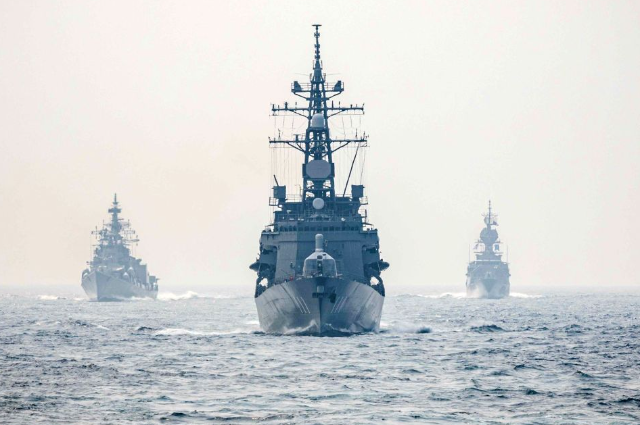ABSTRACT
With the inclusion of Australia in the 2020 Malabar Exercise, India, Japan, Australia and the United States of America have restored their quadrilateral engagement in the Indo-Pacific. The European powers like France, Germany, and the United Kingdom have begun to show interest to join the Quadrilateral Security Dialogue (Quad). The proposition to expand the group and incorporate the member states of the Association of South-East Asian Nations (ASEAN) is crucial for the success of Quad. This essay attempts to explain the stand of Quad on ASEAN and emphasize that it holds no bait to attract ASEAN towards the grouping that quintessentially has taken a stand against China albeit stated otherwise.
INTRODUCTION
The South-East Asia region in the Indo-Pacific is strategically and geographically important. It is advocated that Quad must expand to a ‘Quad-plus system’ by including the member nations of ASEAN. This region has been gaining a lot of significance due to the layers of the turmoil created by China in the South China Sea (SCS); which also forms the main arc of the Belt and Road Initiative (BRI); President Xi Jinping’s dream project.
This essay argues that the Quad’s presence in South East Asia has little to offer. It makes countries of the region apprehensive about the genesis of a new power bloc. Numerous International Organizations have long argued that ASEAN as a bloc has long strived for its centrality and aura in the region.
For India, peace and harmony in the South China Sea and the Indo-Pacific is instrumental in its Act-East Policy, which is the core of India’s cooperation and commitment in the Indo-Pacific. India has reiterated the need for ‘ASEAN centrality and unity. The Act East Policy is gaining traction. Difficult to ignore, even within Quad member nations, the notion or perspective of the Indo-Pacific differs. Whether the China factor can push the hard-liner approach towards a softer stand is of imminent concern.
WHY THE QUAD?
Former Japanese Prime Minister Shinzo Abe, in August 2007 during his address to the Indian Parliament, spoke about the “confluence of two seas”, during which he attempted to outline his strategy for the Indo-Pacific. Abe posited that “Japan and India had a shared responsibility, as maritime nations located at the opposite edges of the two seas, to ensure the maintenance of peace and prosperity anchored by democratic principles.”

The officials from India, Japan, Australia, and the United States, in November 2017, met on the sidelines of the ASEAN and East Asia Summit in Manila. It was an attempt to revive the quadrilateral dialogue that ceased in 2007, with Australia pulling out from the bloc ostensibly due to Chinese pressure. The core objective of the Quad is to create a security framework for the maintenance of a rules-based order on the broader theme of a ‘free and open Indo-Pacific’ in areas of maritime security, trade and surveillance against the backdrop of a growing aggressive China.
The core issues are-freedom of navigation and overflight in the maritime commons, respect for international law, boosting connectivity, maritime security, the North Korean threat and non-proliferation, and terrorism.
ASEAN PERSPECTIVE ON THE INDO-PACIFIC
It has been troublesome to get the member nations of ASEAN on the same page, especially in maritime security and military surveillance due to varying perspectives and priorities on the issue among the member nations. The regional architecture of the Indo-Pacific is complex and thus, difficult for the bloc to counter the expansionist policies of China and pour support to the concept of the Indo-Pacific as outlined by the powers of the world.
Observers and reports have outlined that “the South East Asian countries prefer an inclusive regional architecture, engaging as many regional stakeholders as possible”. Countries like Vietnam, Indonesia and Singapore have increasingly started embracing the idea of the Indo-Pacific but others like Cambodia, the Philippines, and Malaysia have continued to refrain from expressing this conceptualization.
The Quad comprises the United States, Japan, India, and Australia, four of the world’s largest democracies, making them a very big power in the region. ASEAN for a long time has been critical of being overshadowed and its significance being hijacked by the formation of the military alliance in an already vulnerable and highly sensitive region like the South China Sea and the Korean Peninsula.
The Quad alliance though has the potential to counter the military playground that has been created in the South China Sea but this will deteriorate the relations with ASEAN members. The power politics and rivalries will create a vacuum of distrust and something in which China is keen on firmly placing its leg. The political divide will dilute the centrality of the region thus keeping the Quad far from realizing its goal of a ‘free and open Indo-Pacific’.
Supporting the Code of Conduct (CoC) will keep the Quad in the good eyes and on the safer side of the discourse. During the Delhi Declaration, India stressed the centrality of ASEAN and urged them to “conclude a substantive and effective CoC consistent with universally recognized principles of international law and the 1982 United Nations Convention on the Law of the Sea (UNCLOS) at the earliest opportunity.”
CONCLUSION
For the success of Quad without the dilution of ASEAN centrality, New Delhi has to step in aggressively. India has to avoid walking the diplomatic tightrope. Rather, it needs to be open to its ideals and endeavours. It has to signal its commitment to the Indo-Pacific and focus its efforts to deepen ties with regional players to enhance the maritime architecture of the region. The world respects strength and it has been quite evident since World War I. Given the fact that India has long been a strong supporter of ASEAN centrality and it being a key pillar to its Act East Policy, India can navigate the Quad in a way to not create further apprehensions or a dilemma of thoughts within the stakeholders.
